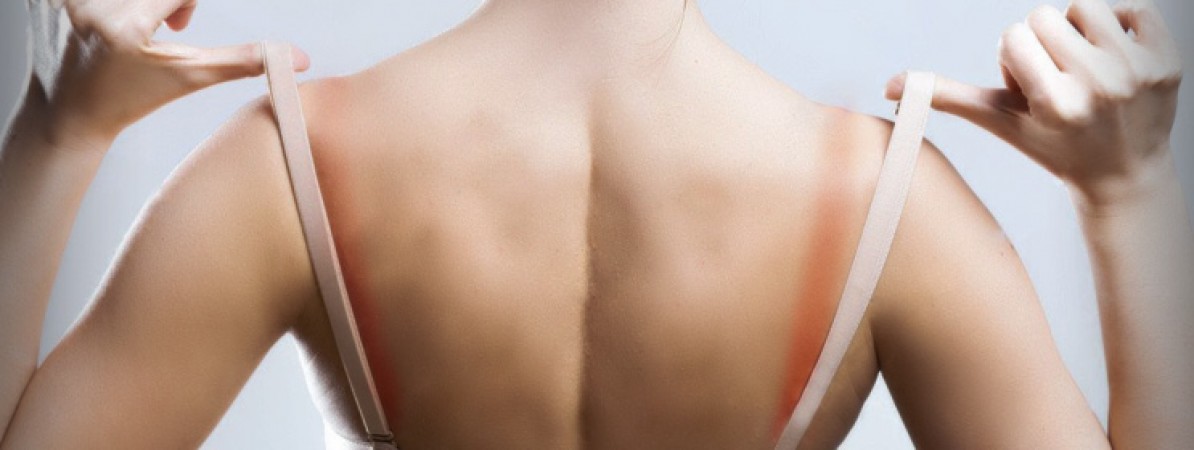
In today's world, fashion and comfort often go hand in hand. However, there are instances where fashion choices might impact our health, and one such concern is the "Bra Strap Syndrome." This article will delve into the intricacies of this syndrome, its effects on health, and ways to mitigate its potential harm. Bra Strap Syndrome is a term used to describe the discomfort and potential health issues that can arise from wearing bras with tight or poorly positioned straps. While bras are designed to provide support and shape to the breasts, incorrect choices and prolonged wear can lead to various physical and psychological complications.
Bra Strap Syndrome refers to the pain, discomfort, and potential health problems caused by tight or narrow bra straps digging into the shoulders. The pressure exerted by these straps can impact the muscles, nerves, blood circulation, and skin in the shoulder and upper back area.
The primary cause of Bra Strap Syndrome is an ill-fitting bra. Straps that are too tight can create unnecessary pressure points, leading to pain and irritation. Additionally, bras with thin straps can dig into the shoulders, causing discomfort and even restricting blood flow.
Tight bra straps can lead to muscle tension and pain in the shoulder and neck area. The constant pressure on these muscles can result in stiffness and soreness, impacting overall mobility.
Prolonged pressure from bra straps can compress the nerves in the shoulder region. This compression can lead to tingling, numbness, and even shooting pains that radiate down the arms.
Tight straps can impede proper blood circulation, leading to reduced oxygen and nutrient supply to the shoulder and upper back muscles. This can result in fatigue and discomfort.
Constant friction and pressure from bra straps can cause skin irritation, redness, and even inflammation. In severe cases, this may lead to painful skin conditions.
Wearing bras that don't fit well is the most significant risk factor for Bra Strap Syndrome. Choosing the right band and cup size is crucial for ensuring comfort and preventing potential health issues.
Women with larger breasts are more susceptible to Bra Strap Syndrome. The weight of the breasts, coupled with poorly designed bras, can exacerbate the strain on the shoulders.
Wearing bras for extended periods without breaks can increase the risk of developing this syndrome. Regular intervals of bra-free time can help alleviate pressure on the shoulders.
Lifestyle choices, such as poor posture and excessive sitting, can contribute to the discomfort caused by Bra Strap Syndrome. Maintaining good posture and incorporating movement can help alleviate strain.
Getting professionally measured and investing in bras that provide the right support and fit is crucial for preventing Bra Strap Syndrome.
Opt for bras with wider straps and a supportive underband. These features distribute weight more evenly and reduce pressure on the shoulders.
Engaging in shoulder stretches and exercises can help alleviate tension and improve muscle flexibility in the shoulder and upper back region.
Switching between different bra styles, such as sports bras and bralettes, can provide relief by varying pressure points and allowing the skin to breathe.
Apart from the physical discomfort, ill-fitting bras can also impact body image and self-confidence. Wearing comfortable and well-fitting bras can lead to better psychological well-being.
Persistent discomfort from Bra Strap Syndrome can lead to stress, irritability, and a negative impact on daily activities. Addressing this issue can improve overall mental health.
Contrary to popular belief, a tighter bra does not necessarily provide better support. A well-fitting bra should be snug but not constrictive.
Underwire bras, when properly fitted, can offer adequate support without causing harm. It's all about finding the right fit and style for your body.
Prioritizing comfort alongside fashion choices is essential for overall well-being. By choosing the right bras and adopting healthy habits, individuals can avoid the discomfort and potential health risks associated with Bra Strap Syndrome. Bra Strap Syndrome serves as a reminder that our fashion choices can influence our health. Being mindful of the bras we wear, their fit, and the comfort they provide is crucial. By understanding the causes, risks, and prevention measures associated with Bra Strap Syndrome, individuals can make informed decisions for their well-being.
Experiencing Stomach Irritation After Eating? Don't Ignore It, It Could Signal a Problem
From Garden to Table: Maximizing Okra's Shelf Life
Raksha Bandhan Reimagined: A Vegetarian Feast for the Family